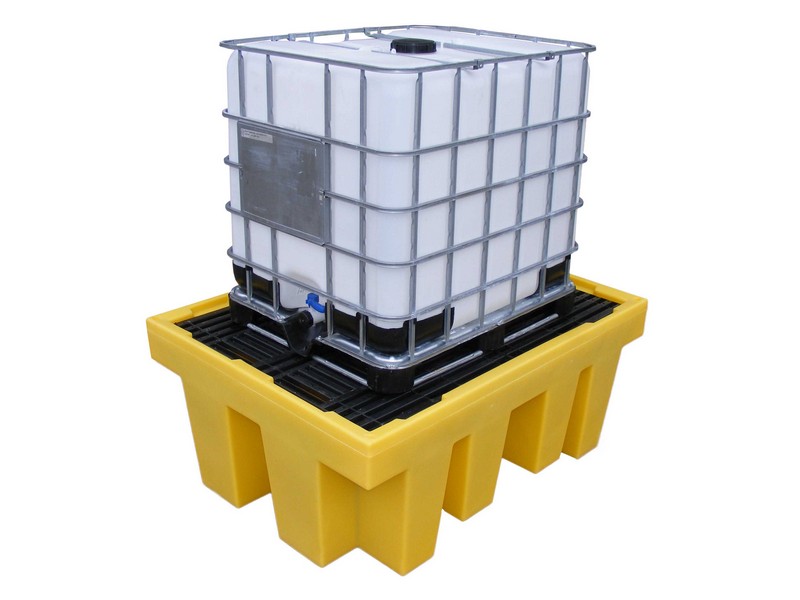A Guide to Bunded Pallets


If your business stores, uses or transports potentially hazardous chemicals, you should absolutely be using bunded pallets as a key part of your health and safety practices. Here is our handy guide to what bunded pallets are, why you need to use them and what you should look out for when you review and purchase.
What are bunded pallets?
Alternatively known as spill trays or spill containment pallets, bunded pallets are essentially a sealed tray with a mesh top that you place your chemical storage containers on top of – any spills or leaks are automatically collected in the tray, preventing them from entering the workspace or the wider ecosystem and improving your spill clean-up and general health and safety practices.
Why do you need to use bunded pallets?
Along with much easier clean-up of any spills and leaks and more effective environmental protection, it is your legal responsibility, in some cases, to ensure that your chemicals are stored in bunded units. The Control of Pollution (Oil Storage) Regulations of 2001 are the relevant laws when it comes to oil, and dictate that if you have containers for oil that are 200 litres or more in capacity, then you must use a bunded pallet. The pallet itself must be of sufficient capacity to deal with any leaks – specifically, 110% or more of the largest individual container, or 25% of the total storage capacity.
What do you need to look out for when you are buying a bunded pallet?
Inside/outside
The open-topped nature of a bunded pallet means that rain and snow can easily get into the containment tray and cause it to overflow. If this is likely to be a risk (ie. you are storing your chemicals outdoors) you need to get a covered unit. These are essentially the same as a standard one but with a canopy or cover over the entire storage station to ensure that rain does not affect performance.
Size and type
You can get bunded pallets of various sizes. Make sure that you get the right size of bunded pallet for your exact requirements.
Some bunded pallets are designed specifically for certain types of containers (drums, intermediate bulk containers [IBCs], etc), so you will need to ensure that your new bunded pallet is suited to the way that you actually handle chemicals.
Strength
The vast majority of bunded pallets are made out of a strong and sturdy polyethylene – not only can this material support the weight of the liquids and containers, but it is also resistant to most commonly used chemicals. For a stronger pallet, you should be able to find some that are manufactured from steel – although these are typically a lot more expensive and only suited for extreme loads.
Mobility
If you think you may need to move your storage containers (and, therefore, the bunded pallets) around your site, then you should consider finding a model that has fork pockets, ready for easy, minimum-fuss use with a forklift truck. If your storage is static, then this is not as necessary.






